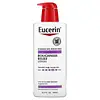What's inside
What's inside
 Key Ingredients
Key Ingredients

 Benefits
Benefits

 Concerns
Concerns

 Ingredients Side-by-side
Ingredients Side-by-side

Water
Skin ConditioningPropylene Glycol
HumectantPetrolatum
EmollientParaffinum Liquidum
EmollientGlycolic Acid
BufferingLactic Acid
BufferingMandelic Acid
AntimicrobialGluconolactone
Skin ConditioningStearyl Alcohol
EmollientCera Alba
EmollientPEG-40 Stearate
EmulsifyingSorbitan Stearate
EmulsifyingArginine
MaskingAmmonium Hydroxide
BufferingMaltobionic Acid
BufferingCetyl Alcohol
EmollientDimethicone
EmollientTocopheryl Acetate
AntioxidantMagnesium Aluminum Silicate
AbsorbentXanthan Gum
EmulsifyingDisodium EDTA
Sodium Bisulfite
AntioxidantMethylparaben
PreservativePropylparaben
PreservativeCI 19140
Cosmetic ColorantCI 17200
Cosmetic ColorantWater, Propylene Glycol, Petrolatum, Paraffinum Liquidum, Glycolic Acid, Lactic Acid, Mandelic Acid, Gluconolactone, Stearyl Alcohol, Cera Alba, PEG-40 Stearate, Sorbitan Stearate, Arginine, Ammonium Hydroxide, Maltobionic Acid, Cetyl Alcohol, Dimethicone, Tocopheryl Acetate, Magnesium Aluminum Silicate, Xanthan Gum, Disodium EDTA, Sodium Bisulfite, Methylparaben, Propylparaben, CI 19140, CI 17200
Water
Skin ConditioningUrea
BufferingGlycerin
HumectantIsopropyl Stearate
EmollientDicaprylyl Ether
EmollientGlyceryl Glucoside
HumectantSodium Lactate
BufferingButyrospermum Parkii Butter
Skin ConditioningNylon-12
Polyglyceryl-4 Diisostearate/Polyhydroxystearate/Sebacate
EmulsifyingCetearyl Alcohol
EmollientArginine Hcl
Skin ConditioningSodium PCA
HumectantLactic Acid
BufferingCarnitine
CleansingMannitol
HumectantSerine
MaskingSucrose
HumectantCitrulline
Skin ConditioningGlycogen
HumectantHistidine Hcl
Skin ConditioningCeramide 3
Skin ConditioningAlanine
MaskingThreonine
Glutamic Acid
HumectantLysine Hcl
Skin ConditioningSodium Chloride
Masking1,2-Hexanediol
Skin ConditioningPhenoxyethanol
PreservativePotassium Sorbate
PreservativeWater, Urea, Glycerin, Isopropyl Stearate, Dicaprylyl Ether, Glyceryl Glucoside, Sodium Lactate, Butyrospermum Parkii Butter, Nylon-12, Polyglyceryl-4 Diisostearate/Polyhydroxystearate/Sebacate, Cetearyl Alcohol, Arginine Hcl, Sodium PCA, Lactic Acid, Carnitine, Mannitol, Serine, Sucrose, Citrulline, Glycogen, Histidine Hcl, Ceramide 3, Alanine, Threonine, Glutamic Acid, Lysine Hcl, Sodium Chloride, 1,2-Hexanediol, Phenoxyethanol, Potassium Sorbate
 Reviews
Reviews

Ingredients Explained
These ingredients are found in both products.
Ingredients higher up in an ingredient list are typically present in a larger amount.
Lactic Acid is another well-loved alpha hydroxy acid (AHA). It is gentler than glycolic acid but still highly effective.
Its main role is to exfoliate the surface of the skin by loosening the “glue” that holds dead skin cells together. Shedding those old cells leads to smoother, softer, and more even-toned skin.
Because lactic acid molecules are larger than glycolic acid, they don’t penetrate as deeply. This means they’re less likely to sting or irritate, making it a great choice for beginners or those with sensitive skin.
Like glycolic acid, it can:
Lactic acid also acts as a humectant (like hyaluronic acid). It can draw water into the skin to improve hydration and also plays a role in the skin's natural moisturizing factor (NMF) in the form of sodium lactate.
Studies show it can boost ceramide production to strengthen the skin barrier and even help balance the skin’s microbiome.
To get results, choose products with a pH between 3-4.
Lower strengths (5-12%) focus on surface exfoliation; higher strengths (12% and up) can reach deeper in the dermis (deeper, supportive layer) to improve skin texture and firmness over time.
Though it was originally derived from milk, most modern lactic acid used in skincare is vegan. It is made through non-dairy fermentation to create a bio-identical and stable form suitable for all formulations.
When lactic acid shows up near the end of an ingredient list, it usually means the brand added just a tiny amount to adjust the product’s pH.
Legend has it that Cleopatra used to bathe in sour milk to help reduce wrinkles.
Lactic acid is truly a gentle multitasker: it exfoliates, hydrates, strengthens, and brightens. It's a great ingredient for giving your skin a smooth, glowing, and healthy look without the harshness of stronger acids.
Read more about some other popular AHA's here:
Learn more about Lactic AcidWater. It's the most common cosmetic ingredient of all. You'll usually see it at the top of ingredient lists, meaning that it makes up the largest part of the product.
So why is it so popular? Water most often acts as a solvent - this means that it helps dissolve other ingredients into the formulation.
You'll also recognize water as that liquid we all need to stay alive. If you see this, drink a glass of water. Stay hydrated!
Learn more about Water